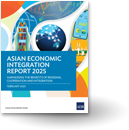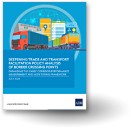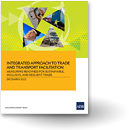What did we learn from the US election on globalization, trade?
The outcome of the US presidential election on 9 November was historic in that it provides a yardstick against which to assess where popular sentiment is heading on important issues such as globalization, inequality, and international trade.
Painting the result as a sheer rupture of distaste against establishment politics or anger among those that feel left behind is too simplistic, and might be overlooking the underlying mega changes happening in the popular mindset. Beyond growing inequality, a shrinking middle class and backlash against globalization, one plausible reason could be unequal distribution of benefits from globalization and free trade. Although traditional notion of the benefits of specialization and gains from trade prevails in the academia as well as in our everyday life, the debate surrounding the unfair distribution of benefits and job losses due to cheap imports during the US election campaign and its final outcome offer an invaluable opportunity to reflect on what went wrong with the argument for globalization and free trade.
Are we seeing a growing tension between what could be good for the economy as a whole, and what in the end turns out to be detrimental to the wellbeing of a significant portion of population? Among advanced economies, the US economy is believed to be performing quite well as evidenced by the 2.9% growth reported for the third quarter of 2016, higher than the 1.4% growth in the previous quarter according to the advance estimate from the US Bureau of Economic Analysis. But is this growth being translated into improvement in individual wellbeing? One way to assess this is to gauge by job opportunities, as they provide not only means for income but also crucial base for human dignity and even self-confidence. Then, what’s further puzzling could be the historically low level of US unemployment at the moment, staying at 4.9% in October. So, what went wrong? Nothing really, but careful thought leads us to conjecture that the unemployment rate might not be properly reflecting the level of individual wellbeing.
US unemployment rate

Source: Bureau of Labor Statistics, US Department of Labor. Data extracted on November 10, 2016.
As an alternative, we can consider labor force participation rate, the number of employed and unemployed but looking for a job as a percentage of the population aged 16 years and over. As shown below, labor force participation rate is on a gradual declining trend, and now much lower than before the global financial crisis. It was actually 62.8 in October. This could suggest that the tightening labor market might be not only due to an increase in the employed but also because of the unemployed who have left the labor market without looking for a job anymore. Many of these people could be voluntary, but not all, and there could be workers who have been laid off and have given up after searching for another opportunity for some time.
US labor force participation rate

Source: Bureau of Labor Statistics, US Department of Labor. Data extracted on November 10, 2016.
This is a simple probable indication of the source of people’s discontent, but who or what should be blamed for it? Apparently, globalization and free trade, which should ensure wellbeing as a whole for the economy, but there are winners and losers. Without proper compensation or a benefits redistribution mechanism, losers will be trapped in unrecoverable disadvantages. Imagine a small or medium-sized enterprise that had to shut down after having lost competitiveness due to the influx of cheap goods from abroad – owners and employees bear the brunt of income and job losses. Compensation, adjustment, and re-employment for the disadvantaged can be provided by the US Trade Adjustment Assistance Program, in place since 1962, but this system has yielded mixed results.
True, globalization and free trade are not the single factor affecting less job opportunities or loss of jobs for growing segments of a society. Technological advancement, represented by rapid progress of artificial intelligence and 4th generation industrialization, is a no less important underlying factor. Nevertheless, the outcome of the US presidential election reminds us of how much deep-seated public discontent is increasing over the widening gap between growing national and individual wellbeing. Is now the time then to announce the demise of Benthamian “utilitarianism” and further the merits of globalization and free trade? Not yet. What’s important, though, is that as long as academia and practitioners keep criticizing protectionism and populist syndrome instead of making an effort to heal the deep wounds caused to a significant part of society, there is little hope that we can sustain a positive-sum game for all, and we will be trapped in a negative-sum game that will cost everyone in the end. In this vein, governments’ should also focus more on getting the equitable redistribution mechanism functioning, and making targeted assistance to the disadvantaged more effective.
It seems that the ball is now in the court of proponents for globalization and free trade. Let’s see if they can come up with a cure for the drawbacks of globalization and free trade, or keep attacking the protectionists. Indeed, the result of the US election seems to have left proponents of globalization and free trade more serious homework than ever before.
Original article was published at the ADB Blog and duplicated here with permission from the author. *




